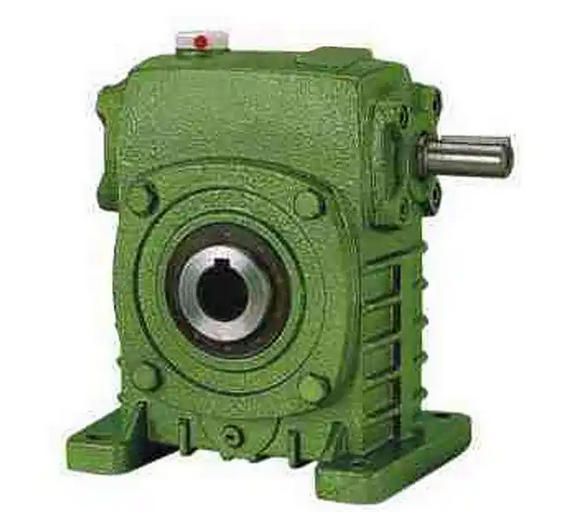Basic structure and working principle of WPKS100-15 worm gear reducer
The WPKS100-15 worm gear reducer is a model in the WP series worm gear reducer, where "WPKS" represents the type of reducer, "100" represents a center distance of 100mm, and "15" represents a transmission ratio of 15. Here is a detailed introduction:
Basic structure:
Box body: Made of gray cast iron, with sufficient rigidity and sealing, used to support and protect internal transmission parts, while storing lubricating oil.
Worm gear: usually made of high-strength alloy steel through quenching and tempering treatment, with high tooth surface hardness and good wear resistance. One end of the worm is connected to the output shaft of the motor, serving as an active component to transmit power.
Worm gear: Generally made of tin bronze or aluminum bronze, it has good anti friction and anti bonding ability. The worm gear is rigidly connected to the output shaft and serves as a driven component to output power.

Shaft components: including input shaft, output shaft, and supporting bearings, ensuring precise meshing and stable rotation of worm and worm gear.
Sealing device: The extended ends of the input shaft and output shaft are equipped with skeleton oil seals or mechanical seals to prevent lubricating oil leakage and external dust from entering.
Working principle: Based on the meshing transmission principle of worm gear, the motor drives the worm to rotate. The helical teeth of the worm gear mesh with the teeth of the worm gear, and the rotational motion of the worm gear is pushed to rotate around its axis through tooth contact. Due to the existence of the helix angle of the worm gear, the conversion from rotational motion perpendicular to the worm gear axis to rotational motion perpendicular to the worm gear axis is achieved, while also achieving the effect of reducing speed and increasing torque.

